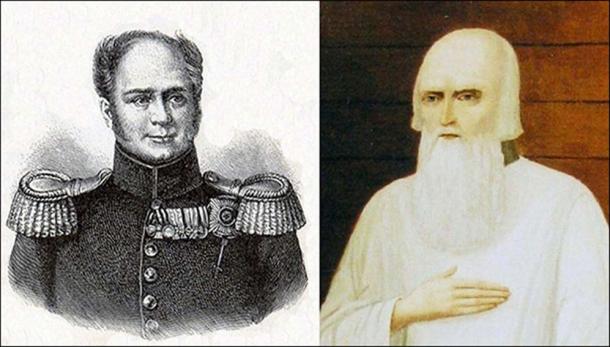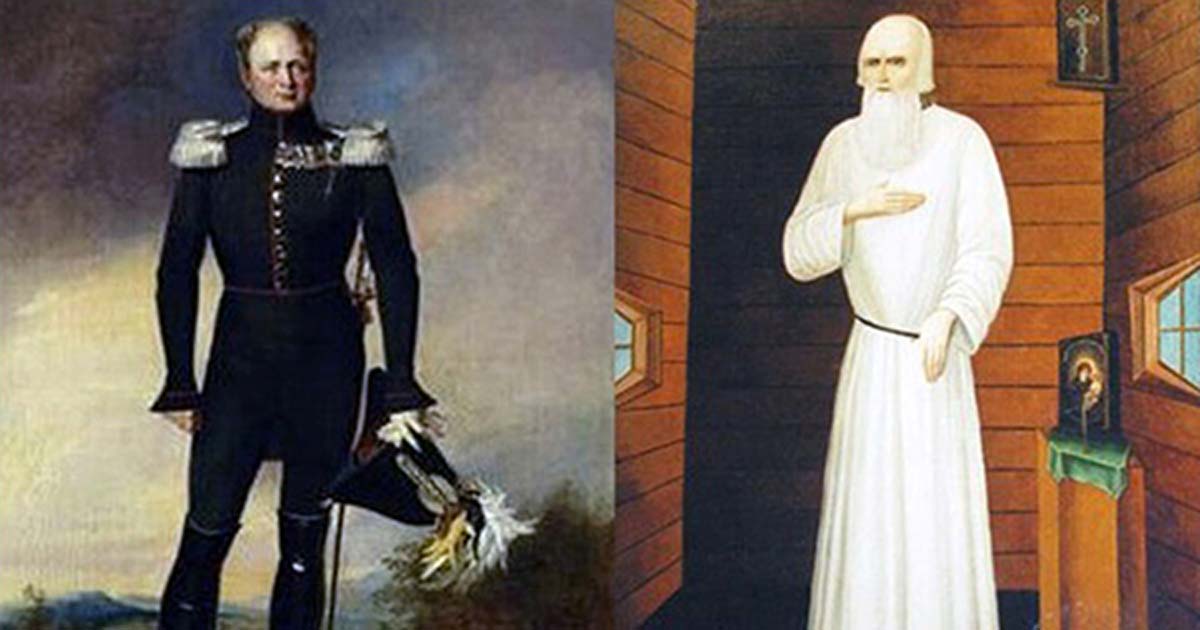Science ‘To Answer Russian Royal Mystery’: Did Tsar Stage Death to Become Siberian Monk?
By The Siberian Times reporter
Officially, Alexander I died of typhus aged 47 on December 1, 1825, but evidence suggests he faked his demise and lived as a holy man.
Genetic analysis is soon to be used to determine whether Tsar Alexander I lived for almost four decades as a modest monk after his supposed - and unexpected - death in Taganrog on the Azov Sea, a senior Russian churchman has indicated.
The monarch had led Russia from 1801 until his death 23 years later, famously defeating Napoleon in 1812. He also ruled Poland and Finland. The tsar, sometimes known as Alexander the Blessed, is said by history books to be buried alongside other Romanov monarchs in the Peter and Paul Cathedral in St Petersburg.
- Dmitri of Uglich and the Three False Dmitris: One of the Most Bizarre Episodes in Russian History
- The French Brews Brothers: Benedictine Monks Bring a Traditional Brewing Practice Back to Life
- Why Was Such a Colossal Bath Tub Built for Tsar Alexander I?
Or is he? The long-running rumors about the tsar living as a highly educated monk, known as Feodor Kuzmich, are set to be tested by science, according to Rostislav, bishop Tomsky, and Asinovsky. “It is quite likely that such an analysis will be held soon,” the bishop said.
He indicated the tests would be conducted by the Russian Academy of Sciences with the involvement of officials of the Orthodox Patriarch, Kirill.


Tsar Alexander I and monk Feodor. Pictures: Vesti Tomsk
The DNA analysis is expected to reveal whether the tsar lived for 39 years after his official death. Bishop Rostislav said:
“We had received several requests to conduct analysis, including those who would like to widely cover it in the media. We did not give our permission for this because such expertise should be held in a peaceful environment. There also was an inquiry from the Academy of Sciences, which we redirected […] to the Moscow Patriarchy.”
Bishop Rostislav indicated church officials are now moving towards permitting genetic and other tests on the remains of the holy man, whose remains lie in Bogoroditse-Alexeevsky Monastery in Tomsk. He said he had given his opinion to the church authorities in favor of scientific analysis of the monk's remains.
Rumors in orthodox circles have suggested that Alexander I's tomb in St Petersburg is empty, but the basis of such claims is unclear.
Handwriting analysis has already suggested that holy man Feodor Kuzmich - made a saint in 1984 - and Alexander I were the same person.
The mysterious monk, who spoke several languages and was noted for his genteel manners, appeared in the Siberian city of Tomsk a dozen years after the tsar's 'death'. He lived here until he died in 1864.



Samples of Monk Feodor (top) and Alexander I’s handwriting. Pictures: Vesti Tomsk
The monk told people that he had been a wanderer and was unable to recall his past.
Alexander I's empress Elizabeth - they wed when she was 14, and he a year older - officially passed away a few months after him.
There is a separate theory that her death was also faked, and that she subsequently became a nun known as Silent Vera.


Empress Elizabeth and nun Silent Vera. Pictures: Vesti Tomsk
Even in tsarist times there was speculation as to the identity of the mysterious monk, who became known as Feodor Tomsky after the Siberian city. Writer Leo Tolstoy, among others, highlighted the theory that he was, in fact, the former tsar.
Two years ago, Svetlana Semyonova, president of Russian Graphological Society, concluded from handwriting samples that 'it was one and the same man'.

Svetlana Semyonova, president of Russian Graphological Society. Picture: Vesti Tomsk
The writing of both men shared an 'unusual style', she said.
“I was given a handwritten [sample] by Alexander I at the age of 45, and also another handwritten sample by Feodor Kuzmich. The only difference is that in the handwriting of an 82 year old man we can see that he was deep in his spiritual world, arches and circles appeared in his writing. Key features remained the same in all works.”

Two years ago, Svetlana Semyonova, president of Russian Graphological Society, concluded from handwriting samples that 'it was one and the same man'. Pictures: Vesti Tomsk
Her claims were revealed at a forum in Tomsk which focused on claims that historians may have been hoodwinked by the otherwise healthy tsar's death from sudden illness.
Professor Andrey Rachinsky, of the Paris Institute of Eastern Languages and Civilizations, said that Tsar Alexander III had a picture of the monk in pride of place alongside those of his royal predecessors in his office.
And the monk's belongings were passed to a leading churchman close to the royal family after he died.
- The Search for the Lost Library of Ivan the Terrible
- Mummified remains of monk, still in lotus position, found in Mongolia
- 800-year-old remains of medieval monk found poking out of cliff face
The theory that the tsar craved a holy life as a monk is based on him seeking forgiveness for coming to power after the murder of his father, Paul I. Historians say it is doubtful that he was directly involved in killing his father, but he was in the palace at the time and became the direct beneficiary.
The inscrutable monk was quoted by Tolstoy as having said: “If I had not confessed the truth about myself, the heavens would have been surprised; if I had confessed it, the earth would have been surprised.” The writer added:
“Even when monk Feodor Kuzmich was alive - he came to Siberia in 1836 and lived for 27 years in various places - there were strange rumors about him that he was hiding his real name and position and that it was Emperor Alexander I. After the monk's death, these rumors only spread and became stronger. Not only common people believed them but many from the elite, including the royal family of Tsar Alexander III. The reasons for these rumors were the following: Alexander died unexpectedly, he did not suffer from any disease before, he died far away from home in a remote place of Taganrog, and when he was put in the coffin many who saw him, said that he changed a lot, this is why the coffin was quickly sealed. It was known that Alexander said and wrote that he wanted so much to leave his post and to stay away from this world. And one more fact which is less known is that in the official statement where Alexander's dead body was described there was a line that his back and bottom were of dark red color and it was hardly possible to be a true description of the body of the emperor.”
He said the monk's and tsar's “height and appearance” were similar with “the same kind of round shoulders.”

Alexander I (L), Monk Feodor. Picture: Vesti Tomsk
The monk had claimed to have been 'a homeless man' who did not remember his family - yet he spoke foreign languages and had 'a noble way gentle with others which clearly meant that he was the person with a high position in the society'.
At his death, he is said to have left a 'coded message' signed A.P. which matched the tsars name and patronymic, Alexander Pavlovich.
Top Image: The theory that Tsar Alexander I craved a holy life as a monk is based on him seeking forgiveness for coming to power after the murder of his father, Paul I. Source: Vesti Tomsk
The article’ Science 'To Answer Russian Royal Mystery': Did Tsar Stage Death to Become Siberian Monk?’ originally appeared on The Siberian Times and has been republished with permission.


















Comments
Does anyone know whether the DNA test was done?
I hope he found the forgiveness he sought
Caution !
------> The color portrait of young royal beautiful Lady, is of Duchess Louise of Mecklenburg-Strelitz (Luise Auguste Wilhelmine Amalie;
(10 March 1776 – 19 July 1810) Queen consort of Prussia as the wife of King Frederick William III not
of Empress Elizabeth Queen consort as the wife of Czar Alexander I of Russia